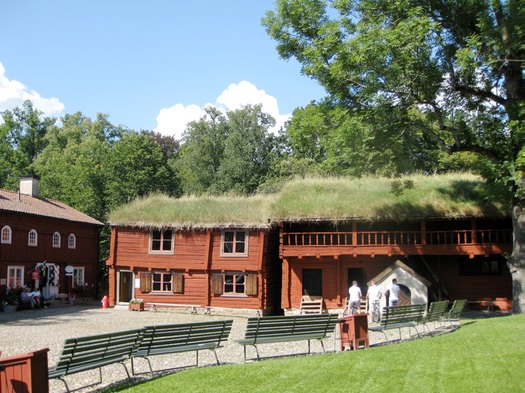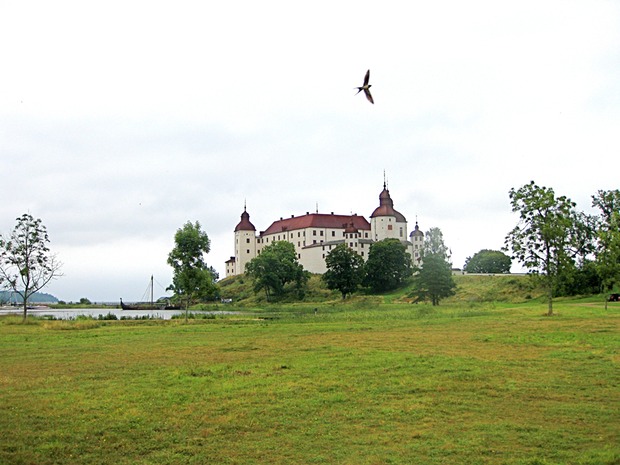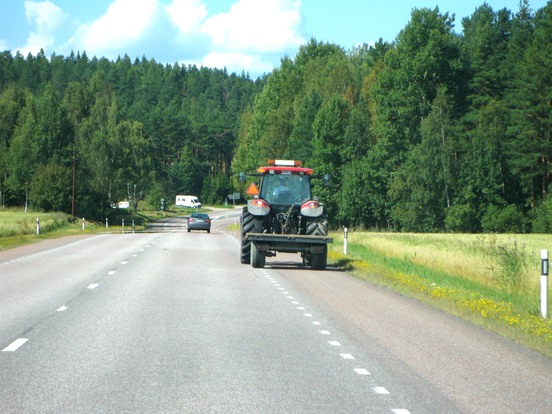Winding our way west across southern Sweden, we have visited Nora, a small, mostly wooden one-story town, oozing charm, that has not yet burned to the ground. We also visited the castle in Örebro after finding a place to park Rover right alongside its moat in the center of the city. Later we drove just a little further into the town to Wadköping, another old handcraft village. Most of its buildings had been moved from elsewhere in the town to create the place. Unlike other similar places we’ve visited, nearly all of it was open, and it had a large used bookstore with an English section: always a popular find.

We stayed in Örebro that evening, in a huge resort campground where the receptionist just gave us a 24-hour internet password (even though the sign in the Reception had said we’d be charged for it). The next day we drove south to Kumla, to the largest shopping center in central Sweden, and then on to a shoe factory museum. The parking lots around the shopping centers have always been large and easy to maneuver, but finding parking in the center of these little towns is always a challenge. The shoe factory had its own little place for four cars, and Rover hung out just a bit on to the sidewalk . . . well, about 4 feet.
We are finding the still open campgrounds to be the large family-oriented resorts that cater to families during the Swedish vacation period. It seems to have ended in mid-August; in fact, one of the places we stayed at actually had closed down half the camping spots already. We drove on to Lidköping, stayed one night in the rain, and then drove north to the lovely Läckö Slott (Castle) standing out on a point on Vänern lake (and we certainly hope the purists among our readers appreciate the trouble we’ve taken to get the diacritic markings right!)

All of the detail inside the castle is original--and painted--no gold leaf here. Seeing it was worth driving the 30 miles on a country road. As we got nearer the castle, the path got more and more narrow. It was simply laid out over the terrain, up, down and around, not a tenth of a mile of it straight. But it was a good road just the same, well paved and not too bumpy, even through it offered no passing places.
We believe we had written earlier that the roads deteriorated when we left Norway and drove into Sweden. We take that back. The Swedish roads have been unfailingly excellent: wide, good shoulders, and well marked. (Of course, they do not have the Norwegian terrain to deal with.) One interesting driving regulation in Sweden calls for slower drivers to pull over when possible to let faster traffic pass. Some of the highways have wide shoulders just for that purpose, marked by broken white lines. The highway we were on today had shoulders sometimes almost the width of another full lane. We have had to detour on to country roads a few tmes and even those have been adequate and comfortable to drive Rover on.

When we return to Lillehammer we will have to winterize Rover’s fresh water plumbing system before we consign her to Norway’s dark winter storage. We have been unable to find the nontoxic RV water system antifreeze that is so easily available at home: people here just give us a blank stare when we ask for it. Today we found a RV shop big enough to qualify as Sweden’s equivalent to our Camping World . . . but even they didn’t know what we were asking for. We talked at length to the RV dealer onsite, who told us that the German motorhomes he sells are insulated for winter and that they simply blow the lines out. (He also asked to see Rover and took several pictures.) We have never done this (and aren’t sure we can find fittings that will work with our half-American, half-European water-and-compressed-air systems), so we’re still hoping we can find antifreeze or an alternative. Vodka, anyone?
